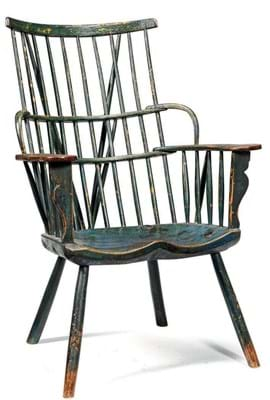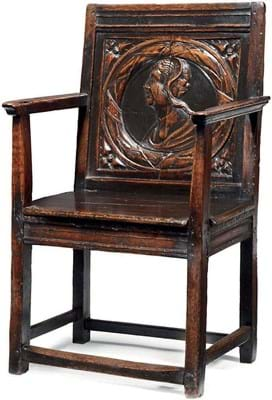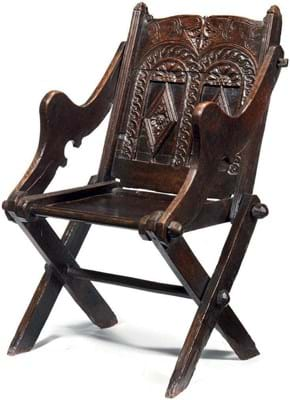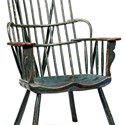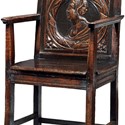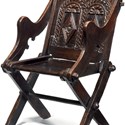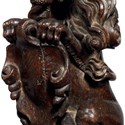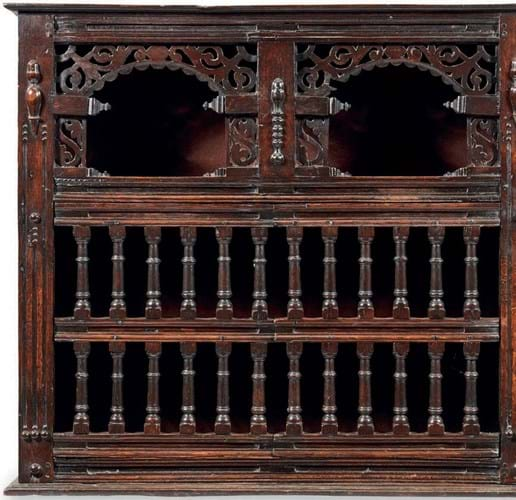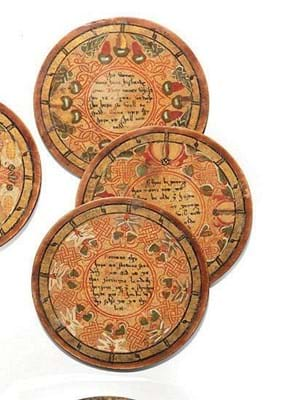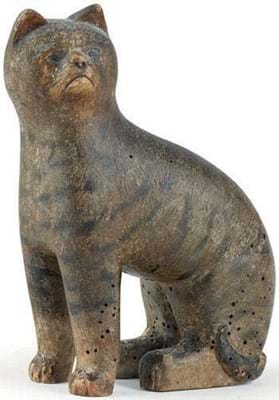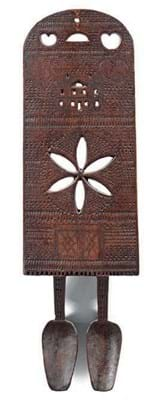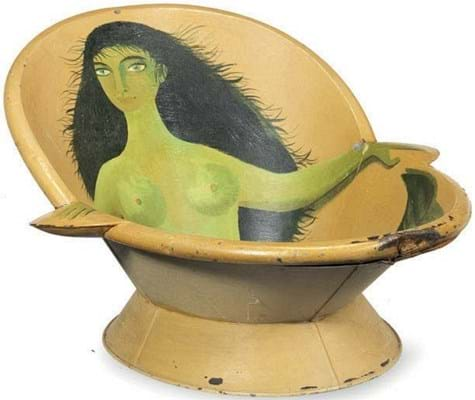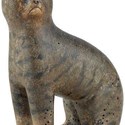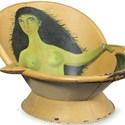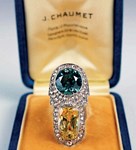That at Dreweatts (24% buyer’s premium) at Donnington Priory on March 28 was led by the £65,000 console tables reported in ATG No 2237, but many standard pieces also performed solidly.
On the same day Bonhams (25% buyer’s premium) got 80% of the 510 lots away at its more specialised biannual Oak Interior sale in New Bond Street which totalled £670,000.
Bonhams’ specialist David Houlston has witnessed the market picking up pace since before the record £880,000 sale last September. At this slightly smaller March sale collectors were again out in force, with virtually everything going to private buyers or to dealers bidding on their behalf.
Early items
Specialist collectors of carving homed in on Elizabethan or James I pieces from the start. The third lot up, a c.1600, 3ft (62cm) tall finial carved as a heraldic lion sejant erect doubled expectations at £15,000.
Particularly rare was a c.1530 polychrome-decorated panel, roughly 2ft 7in (80cm) square, depicting King David kneeling in front of the prophet Samuel with sheep, other figures and a castle in a rural landscape.
Carved with the title *avid is Anoynted Kyng, the style and carved lettering are in the manner of Robert Daye (fl. c.1520-30) whose work is seen at the parish church at Altarnun and other Cornish churches. Bearing traces of green and burnt umber paint, it took £14,000, just shy of the top estimate.
Most of the 11 lots of Henry VIII and Elizabeth I carved oak heraldic panels could be had within modest four-figure estimates, with the top price being £4000 for a pair of c.1520-40 panels measuring 9in wide x 11in high (22 x 29cm) carved in high relief with a lion rampant and a lion sejant erect.
The best-selling furniture lot was deemed one of the earliest examples of a British open-framed, comparatively lightweight, joined armchair. It was dated to c.1530.
The maker omitted panels from the plain frame but, in this case, demonstrated his skill on the back panel carved with a Romayne-type portrait of a female bust in profile.
Estimated at £15,000-20,000, it sold at £32,000.
A slightly later X-framed Glastonbury armchair chair dated to c.1570-1600 sold just below estimate at £28,000. The form takes its name from the chair in the Bishop’s Palace at Wells inscribed to the memory of the last treasurer of Glastonbury Abbey, John Arthur Thorne, soon after he was executed in 1539 for refusing to acknowledge Henry VIII (according to French sources).
Few other such genuine chairs are known to exist, and are all probably from the same Somerset workshop. The chairs are of pegged construction designed to be easily disassembled. This example is formed with three back boards carved with arches and lozenges.
A profusely ornate Charles II chair with inlaid double-panel back was a fine example of its type and sold at £17,000 (estimate £8000-12,000).
Impressive set
For the non-specialist seeking an impressive set of dining chairs, there was a harlequin set of 12 c.1680 ‘back stools’, each with carved panelled backs, mainly featuring oak leaves and daisies, which took £6000.
From more than a century later, half a dozen ‘primitive’ Windsor chairs sparked considerable competition. Embedded with folk art charm, these can often outsell their more urbane counterparts.
Best by a distance was the unusually large and elaborate oak and ash chair illustrated on these pages. Measuring 3ft 6in (1.07m) high, it featured 10 hand-shaped spindles to the rack back and 12 more supporting the back and paddleshaped arms. The c.1730-50 chair, attributed to the West Country, sold just short of estimate at £14,000.
Two mid-17th century oak hanging glasses cases sold at £9500 each. The earlier of the two, c.1650, had a triangular castellated pediment, arcaded shelves with leaf-filled spandrels and extensive geometric-punched decoration. The second, of similar size at 2ft 3in wide and 3ft 9in high (71 x 86cm), was made in oak and elm c.1660 and a quite different form with a pair of doors, each with two rows of six carved spindles, below arcaded shelves. Both had a top estimate of £8000.
Two early oak chests sold well. One, a very rare 15th century or earlier English clamp-front chest, 3ft 9in (1.14m) wide with thick tenonjoined single-board top and sides and broad stile supports, had a very rough-hewn look. Against a £4000- 6000 estimate, it sold at £13,000.
The other, a stollentruhe made in Westphalia, was later at c.1550 and a shade more decorative, being bound with long iron straps with six-petal flowerhead terminals secured with doomed nails. It sold within estimate at £7000.
Selection of non-furniture highlights
Titled The Oak Interior, the March 28 sale at Bonhams offered more than oak, however. See pictures above for highlights.


